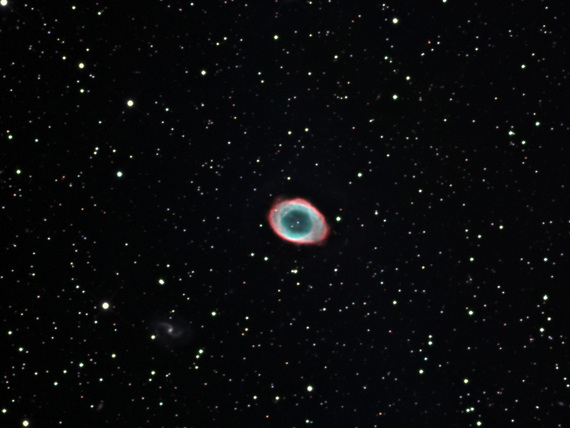The Ring Nebula
 Click Image for full size view Warning: Full size images can be very large |
By |
Catalog |
Obj Type |
Location |
Date Taken: |
Gilbert |
Messier 57 |
Planetary Nebula |
Mayhill, NM |
09-21-2004 |
Description |
||||
M57 was discovered in January of 1779 by Charles Messier (hence the "M") while he was really looking for comets. M57 is the second planetary nebula to be discovered (the first being M27, 15 years earlier). Planetary nebulae are the remnants of supernovas and typically take the form of spherical shells (that look like planets) or rings of hot ionized gas. The ring itself is about 1 light year across and lies at a distance of about 2,000 light years from Earth. The Ring Nebula, located in the constellation of Lyra, is one of the most observed deep sky objects by amatuer astronomers being well located, almost directly overhead, on warm summer evenings in North America. Notice the tiny barred spiral galaxy in the lower left quadrant of the image. This is IC1296 and it lies about 200 million light years from Earth. This image was from Rick's first night with the SSRO equipment. He added color from a September 16, 2004 session with Ron's 20 inch RC and the result is a pretty typical version of the Ring Nebula. |
||||
Technical Details |
||||
Exposure Time: |
CRGB (60, 30, 18, 36 minutes) with color from Ron Wodaski's 20 inch RC | |||
Camera: |
SBIG ST-10XME | |||
Telescope: |
RCOS 16 inch f/8.7 Ritchey-Chretien | |||
Mount: |
Software Bisque Paramount ME | |||
© 2024 Gilbert Used with permission, No reproduction of these images are permitted without written approval from Gilbert. |
||||
